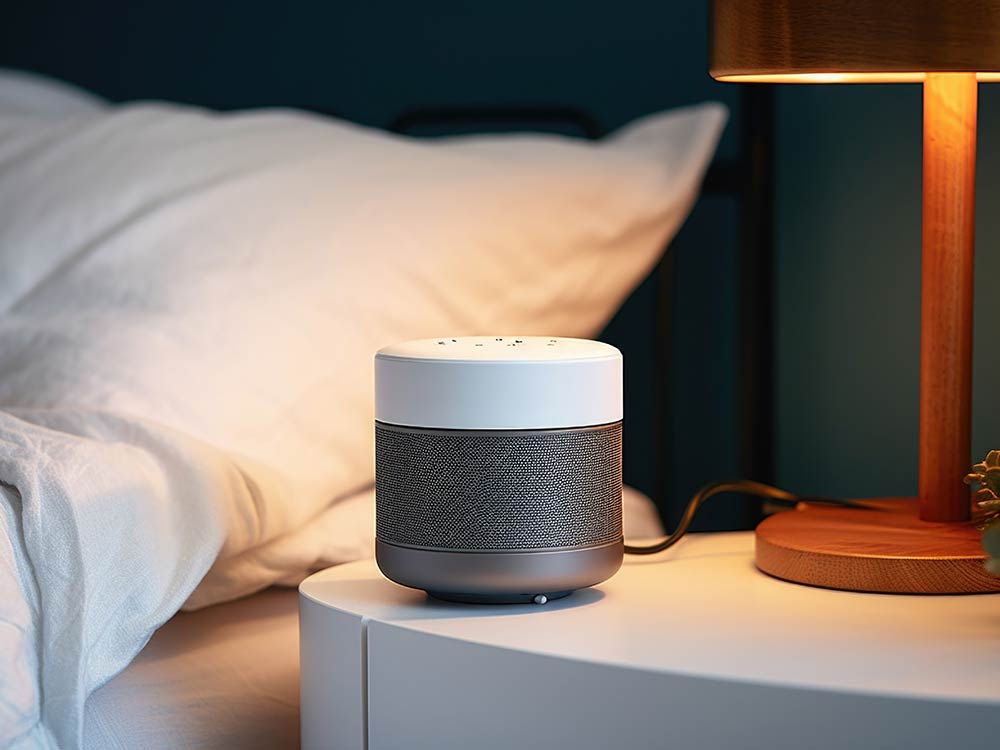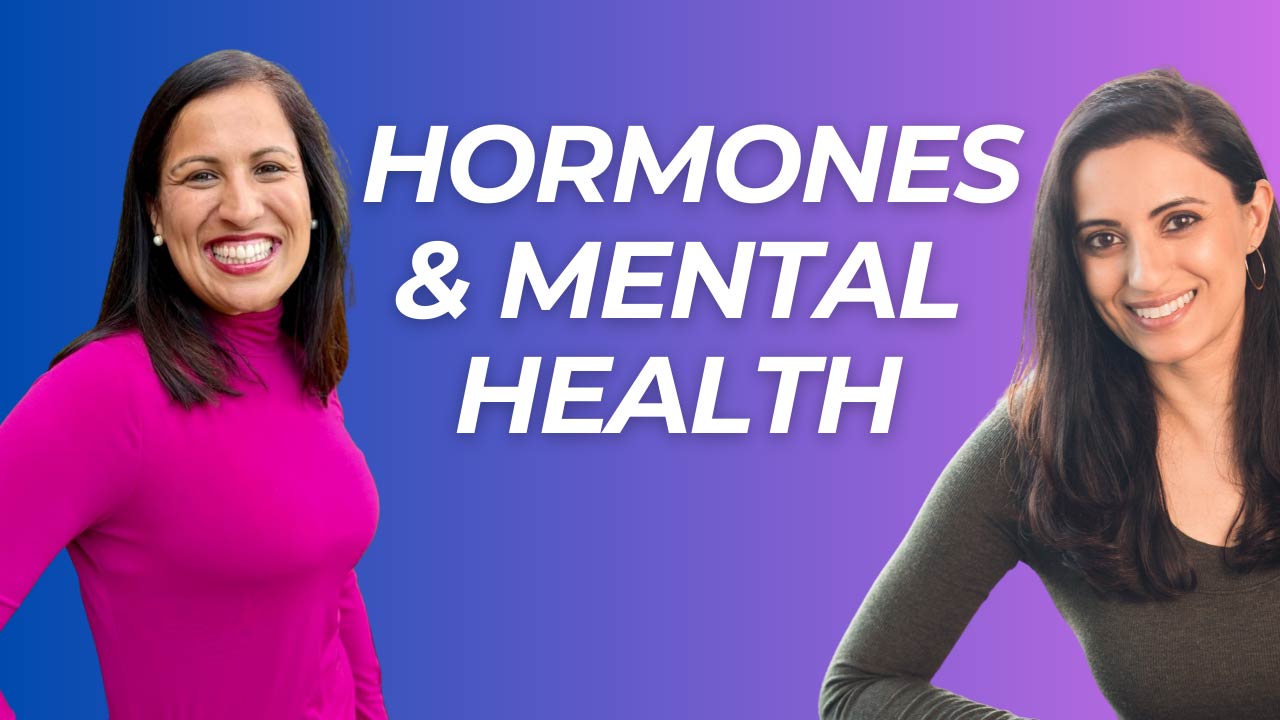This question came up twice this week – once in my insomnia group program, and again in a patient visit:
“Does white noise help with sleep?”
During sleep, the auditory system remains active and the brain continues to process environmental sounds.
When I was living in downtown Chicago, there was constant background noise, which can disrupt sleep.
Nowadays there are tons of apps, YouTube videos, noise machines, and other devices providing auditory stimulation (like white, pink, and brown noise, binaural tones, etc.)
to block noise and promote sleep.
First of all, what are white, pink, and brown noise?
White noise is often used to mask sounds in the environment. Examples include radio static or a whirring fan.
Pink noise is thought to be more pleasant than white noise. Examples include steady rainfall or gentle ocean waves.
Brown noise involves lower frequencies than white or pink noise. Examples include thunder or crashing waves.
Do they help with sleep?
White noise is quite popular – in fact, I have a white noise machine on right now while I’m working. However studies on sleep show mixed results.
Less than a third of research on white noise demonstrates positive effects on sleep quality. (1)
Some studies even suggest white noise could potentially have negative effects on brain function and cognition, more evidence is needed.
Pink noise has been suggested as a potentially more effective alternative to white noise, though research is still limited.
It may improve sleep quality for some individuals, but, like white noise, the rigor of studies on pink noise remains weak.
Brown noise has also gained attention as a sleep aid. While it’s less studied than white and pink noise, some people report that the deeper tones of brown noise help them sleep more soundly.
As with the other types, more research is needed to conclusively determine its effectiveness.
It’s also possible that listening to the same thing each night can trigger a conditioned response, where people associate the noise with falling asleep.
Interestingly, hospital settings have begun experimenting with audio interventions to improve sleep for patients.
When I was in residency, they used to play classical music on the general medical floor and I found it calming as a sleep-deprived resident. But it was only played during the day.
Given the noise-sensitive environments in many hospitals, noise reduction strategies paired with audio interventions may help improve sleep quality in these settings.
Is it safe?
There’s no strong evidence to suggest that audio interventions like white, pink, or brown noise are harmful when used short-term.
In fact, they may be a good option for patients struggling to sleep in noisy environments.
A small study done in NYC found that white noise significantly improved sleep latency and reduced wake after sleep onset (WASO) in people exposed to high levels of environmental noise. (2)
However, like a Pavlovian response, people may inadvertently condition themselves to rely on the sounds, potentially making it difficult for them to sleep without them.
There are also potential concerns about not allowing the auditory system to switch off, rest, and repair overnight.
Continuous exposure to high levels of white noise could potentially lead to hearing damage. White noise machines can sometimes hit unsafe noise levels, especially if they’re turned up too loud. (3)
Another study indicated that prolonged exposure to white noise can induce maladaptive changes in the brain, potentially impacting neurological health and cognition. (4)
Back to sleep, some studies suggest that continuous noise may actually disrupt sleep. (1)
Bottom line
The evidence is still inconclusive, but this area of sleep science is evolving.
If patients ask you about this, here are considerations:
- Mixed Effectiveness: Research on white, pink, and brown noise for sleep shows mixed results, with some studies reporting benefits and others showing limited or no effect.
- Conditioned Response: Regular use of noise for sleep may create a dependency, making it harder to sleep without it.
- Safety Concerns: Long-term exposure to high volumes of background noise may cause hearing damage.
How I guide my patients: I wouldn’t recommend using white, pink, or brown noise continuously.
However, if it helps them wind down and fall asleep, using it for a set time at night could be helpful. And of course, be mindful of the volume and risks of hearing loss.
As always, it’s essential to make personalized recommendations and to “look under the hood” to see what else might be going on with your patient’s sleep.
References
(1) Riedy SM, Smith MG, Rocha S, Basner M. Noise as a sleep aid: A systematic review. Sleep Med Rev. 2021 Feb;55:101385. doi: 10.1016/j.smrv.2020.101385. Epub 2020 Sep 9. PMID: 33007706.
(2) Ebben MR, Yan P, Krieger AC. The effects of white noise on sleep and duration in individuals living in a high noise environment in New York City. Sleep Med. 2021 Jul;83:256-259. doi: 10.1016/j.sleep.2021.03.031. Epub 2021 Apr 6. PMID: 34049045.
(3) De Jong RW, Davis GS, Chelf CJ, Marinelli JP, Erbele ID, Bowe SN. Continuous white noise exposure during sleep and childhood development: A scoping review. Sleep Med. 2024 Jul;119:88-94. doi: 10.1016/j.sleep.2024.04.006. Epub 2024 Apr 16. PMID: 38663282.
(4) Attarha M, Bigelow J, Merzenich MM. Unintended Consequences of White Noise Therapy for Tinnitus-Otolaryngology’s Cobra Effect: A Review. JAMA Otolaryngol Head Neck Surg. 2018 Oct 1;144(10):938-943. doi: 10.1001/jamaoto.2018.1856. PMID: 30178067.



